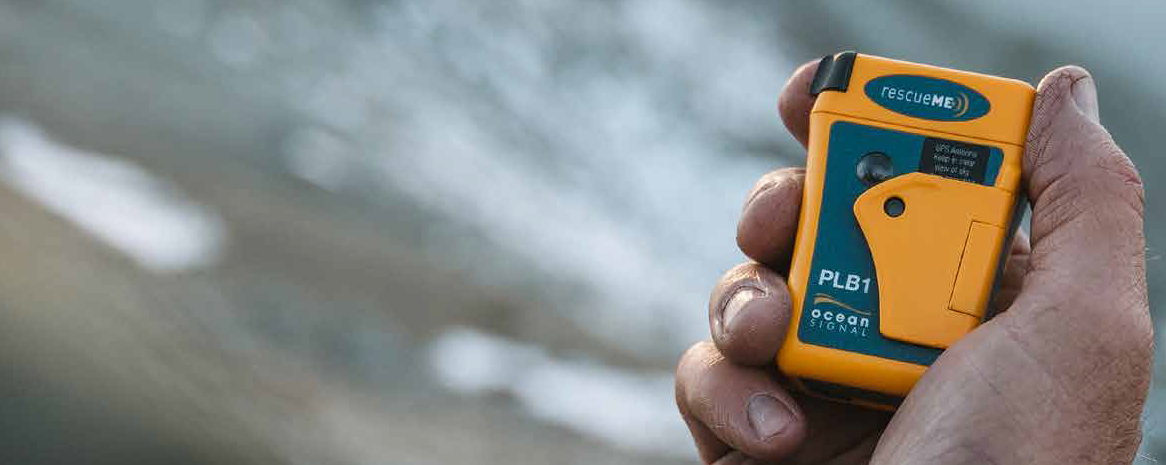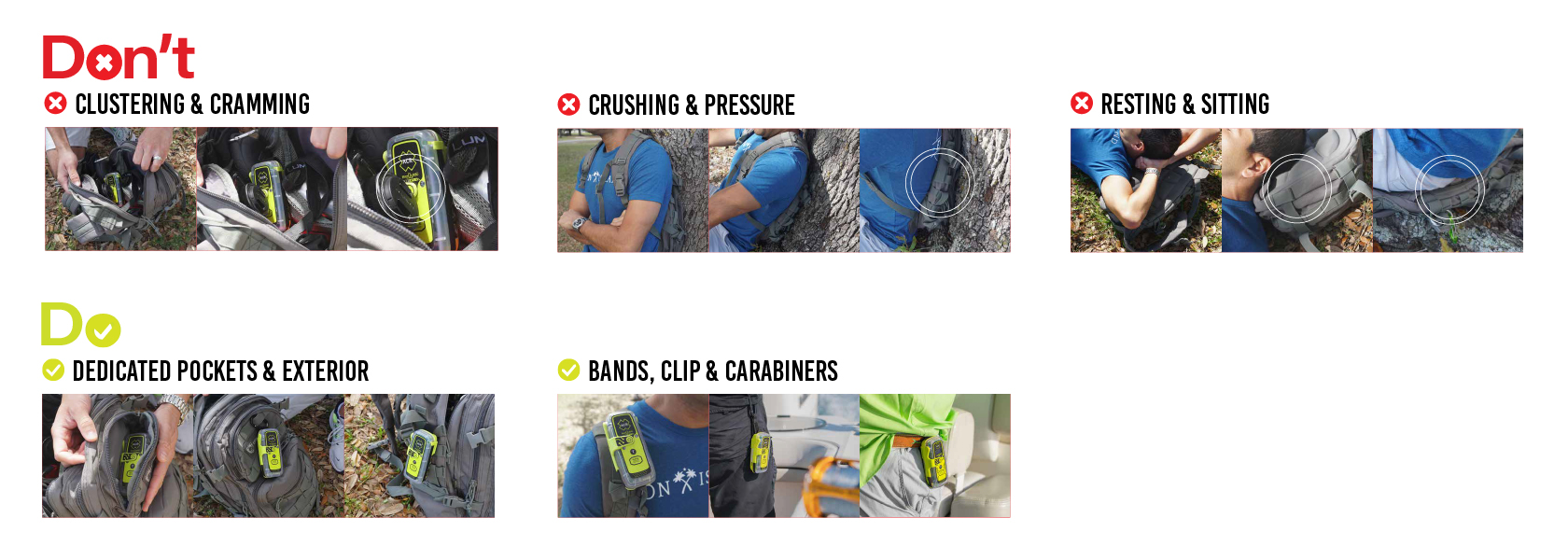DO’S & DON’TS: PERSONAL LOCATOR BEACON GUIDE
ENHANCING YOUR PRODUCT EXPERIENCE
Having made the important decision to acquire a Personal Locator Beacon (PLB), it’s equally important to understand the factors that can impact the overall product experience. This helpful guide provides users with awareness of the ideal circumstances for keeping your beacon in perfect working order, thereby ensuring it is always ready for use when needed the most.
Keep on reading for tips on Best Practices, Operation Tips, Storage Recommendations, and more!

BACKPACK STORAGE
Backpacks and other sack-based storage systems are a great traditional cargo option for nearly all environments. However, there are always challenges to both protecting and preserving the performance of equipment stored within.
Here are tips on how best to store your communication devices inside!
❌ DON’T ❌
CLUSTERING & CRAMMING
Usually the normal behavior would be to drop whatever items into your backpack or sack, but this can lead to ‘clusting or cramming’ of items. This could put added strain on your valuables and also lead to a potential false activation.
CRUSHING & PRESSURE
A common occurrence on the trail or during other adventures is leaning on, or placing our weight on, our backpack. This scenario also creates strain on backpack contents and can potentially reduce the battery life of your PLB due to potential inadvertent activation.
RESTING & SITTING
Use of equipment as a cushion or pillow can seem practical on the journey, but be aware of the weight being placed on your valuables. Gives new meaning to the phrase; “Between a rock and a hard place”.
✅ DO ✅
DEDICATED POCKETS & EXTERIOR
Dedicated pockets, or exterior mounting options not only allow for easier access to your PLB but also provide greater protection for your device when it’s stored in an upper compartment or mounted in a higher position on the backpack.
BANDS, CLIP & CARABINERS
Use of bands, clips and carabiners also allow for rapid access on your person and provide a direct connection between you and your PLB. But be aware of your position and influence on the unit.

DRYBAG/PACKS/POUCHES
The benefits of drybags’ water-resistant enclosures include distinct advantages for electronic equipment. However, protection against the elements is unfortunately not mirrored in regards to the protection offered against hard impact and heavy pressure.
❌ DON’T ❌
CLUSTERING & CRAMMING
Drybags, while protecting from water and dust, often offer little to no protection from impact or shock. Be conscious of other items also being stored as these can potentially impact your beacon and other valuable devices.
CRUSHING & PRESSURE
Pressure and weight are even more important with these types of storage options as they often don’t have any kind of foam or cushion. Also be aware of loosely storing your beacon in crowded compartments within your vehicle/vessel.
RESTING & SITTING
With pouches, be aware of the environment around you. Remain cognizant of your posture when leaning, sitting, or resting to negate the possibility of an accidental activation.
✅ DO ✅
SIDE-PACKS, BUMBAGS & POUCHES
We recommend when using side-packs, bumbags and/or pouches to keep the beacon relatively clear of other items and the activation area free from outside influence. Awareness of one’s surroundings is also advised to keep your unit safe.
STRAPS & BANDS
Hooking your unit to straps and bands can be very appealing when traveling, however be sure to place it in an area where minimal physical interaction can occur. Also make sure that your unit is securely attached to prevent loss or theft.

MARINE & VESSELS
Out on the water, the condition can be wide and varied. As weather, vessel type, and activity can have an effect on how you store and use your equipment.
❌ DON’T ❌
CLUSTERING & CRAMMING
Providing ample space and not simply dropping your beacon into tight and highly compressed environments can provide for situation where a false activation can occur. Please avoid cramming or cluttered storage compartments.
CRUSHING & PRESSURE
Leaning or placing weight on your equipment could inadvertently damage or tamper the placement of your beacon. Such as your life jacket deployment, for example.
✅ DO ✅
LIFE JACKETS
When not placing your device within the life jacket, external placement is possible. Just be aware of not only placement in regards your external area but also in terms of where the life jacket will inflate to.
BAGS AND POCKETS
Pockets are a viable option of keeping your beacon close and accessible. Like other areas, please be aware of what other objects could come in contact with your unit. Also be aware of any weight you may inadvertently place on your unit.


OPERATION TIPS
Here are some quick tips on how to ensure the best performance out of your beacon.

IN SUMMARY,
While storage is important and proper preparation is key. It is your knowledge of your own life saving equipment which can save not only your life but that of your love ones. Test your beacons prior to your journeys, Know the proper light sequence associated to your units. Communications is more than just transmission, it’s understanding.
LOOK AFTER YOUR BEACON AND IT WILL LOOK AFTER YOU
If you want to learn more about emergency beacons, and other life saving equipment please visit:
- www.amsa.gov.au
- www.maritimenz.govt.nz/
- www.ACRARTEX.com
- www.OceanSignal.com







